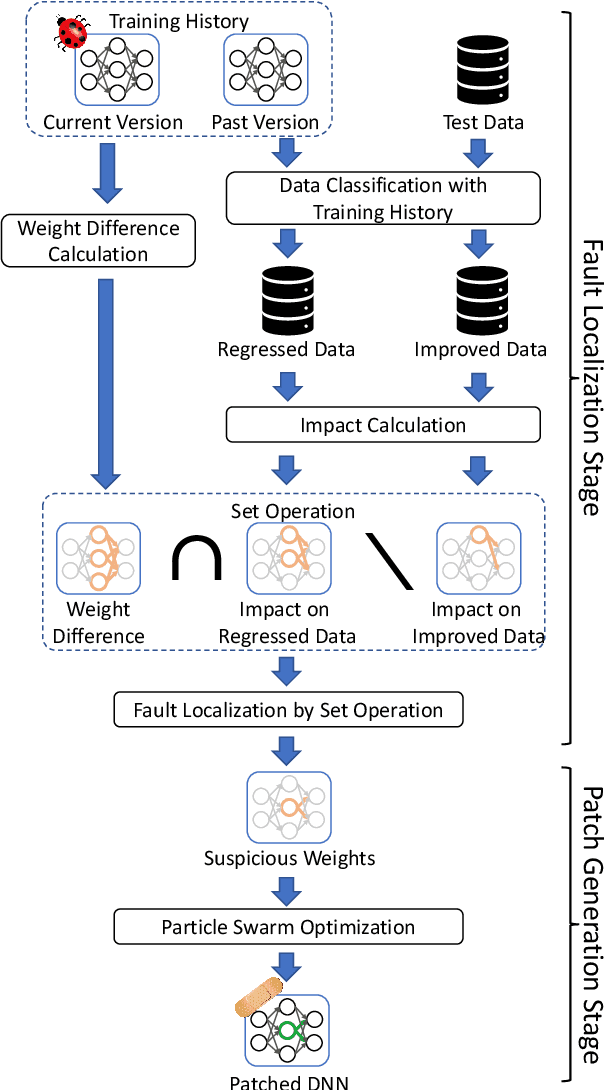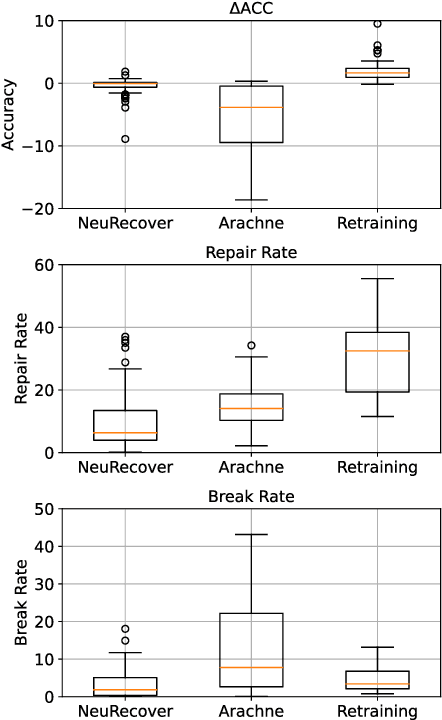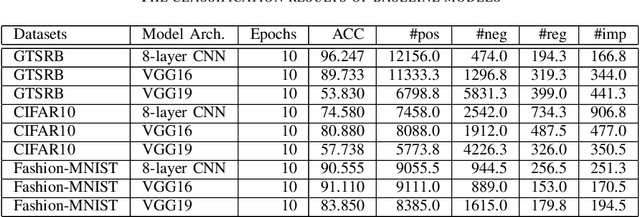Takao Nakagawa
An Experience Report on Regression-Free Repair of Deep Neural Network Model
Mar 10, 2025Abstract:Systems based on Deep Neural Networks (DNNs) are increasingly being used in industry. In the process of system operation, DNNs need to be updated in order to improve their performance. When updating DNNs, systems used in companies that require high reliability must have as few regressions as possible. Since the update of DNNs has a data-driven nature, it is difficult to suppress regressions as expected by developers. This paper identifies the requirements for DNN updating in industry and presents a case study using techniques to meet those requirements. In the case study, we worked on satisfying the requirement to update models trained on car images collected in Fujitsu assuming security applications without regression for a specific class. We were able to suppress regression by customizing the objective function based on NeuRecover, a DNN repair technique. Moreover, we discuss some of the challenges identified in the case study.
NeuRecover: Regression-Controlled Repair of Deep Neural Networks with Training History
Mar 04, 2022



Abstract:Systematic techniques to improve quality of deep neural networks (DNNs) are critical given the increasing demand for practical applications including safety-critical ones. The key challenge comes from the little controllability in updating DNNs. Retraining to fix some behavior often has a destructive impact on other behavior, causing regressions, i.e., the updated DNN fails with inputs correctly handled by the original one. This problem is crucial when engineers are required to investigate failures in intensive assurance activities for safety or trust. Search-based repair techniques for DNNs have potentials to tackle this challenge by enabling localized updates only on "responsible parameters" inside the DNN. However, the potentials have not been explored to realize sufficient controllability to suppress regressions in DNN repair tasks. In this paper, we propose a novel DNN repair method that makes use of the training history for judging which DNN parameters should be changed or not to suppress regressions. We implemented the method into a tool called NeuRecover and evaluated it with three datasets. Our method outperformed the existing method by achieving often less than a quarter, even a tenth in some cases, number of regressions. Our method is especially effective when the repair requirements are tight to fix specific failure types. In such cases, our method showed stably low rates (<2%) of regressions, which were in many cases a tenth of regressions caused by retraining.
 Add to Chrome
Add to Chrome Add to Firefox
Add to Firefox Add to Edge
Add to Edge